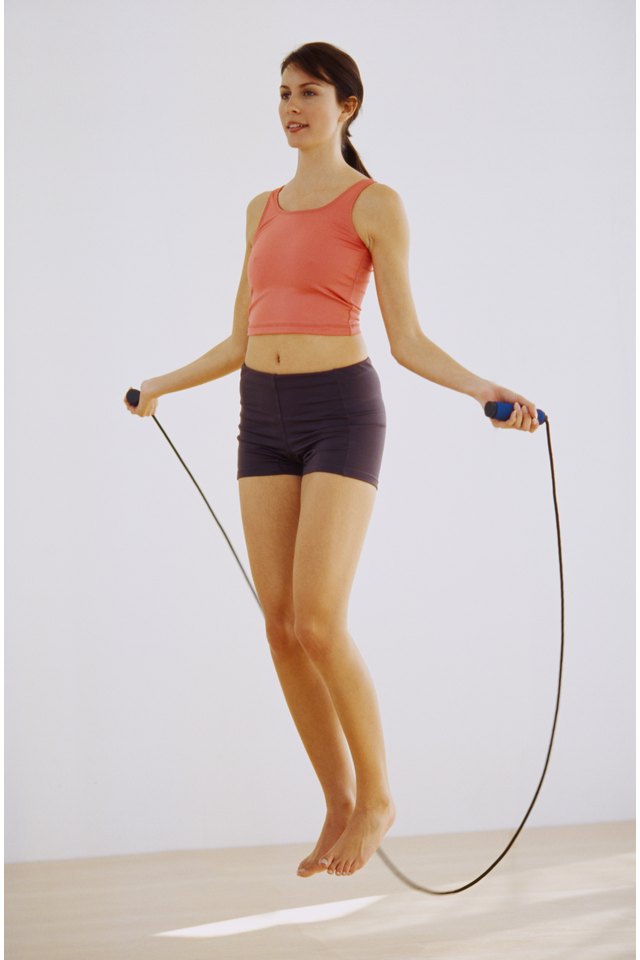What Type of Surface Is the Best to Jump Rope?

Jumping rope is an excellent workout that develops coordination, cardiovascular endurance and muscle power, but it also places stress on muscles and joints, particularly in the feet, ankles, legs and knees, according to jump-rope training guidelines of the United States Tennis Association. The International Rope Skipping Federation recommends choosing an adequate jumping surface to maintain the safety of muscles and joints in the lower body, ensuring a beneficial jump-roping session.
Shock Absorbant
The ideal surface for jumping rope is a suspended wood floor, according to professional jump roper Peter Nestler. Such floors are typically installed in gymnasiums that support aerobics and dance instruction, and they help distribute shock to ease the impact on joints. Access to a gym or workout space with such a floor is not always easy to come by, but you can look for alternate surfaces that replicate some of its characteristics. Nestler advises jump roping on a surface that has some give, like a clay court or outdoor grassy area.
Even Surface
Particularly outdoors, look first for a surface that's even. Jump roping can be difficult and even dangerous if done on a surface that's liable to trip you up. In indoor spaces, seek out existing flat surfaces that provide cushion and support for the joints. Boxing trainer Ross Enamait, who trains with jump ropes, recommends such surfaces as a gym mat, outdoor rubber track or tennis court. All of these surfaces provide some added bounce and flexibility. Enamait also notes that a boxing ring is an excellent jump-rope surface that helps preserve the feet and ankles.
Concrete
Despite its even surface and wide availability, avoid jump-roping on concrete flooring. Any surface that is too hard, such as asphalt or stone, will put extreme stress on the knees and cause you to tire quickly. Enamait suggests placing an interlocking foam mat over concrete floors as a temporary surface for jumping rope. These mats are useful for concrete surfaces in the home or at gyms with concrete floors.
Carpeted or Smooth?
In the home, a carpeted surface may be the only available one that provides enough cushion for jumping rope. It's acceptable to jump rope on carpet, according to Nestler, but it presents some difficulties for beginners as the rope bounces off of carpet, forcing higher jumps. A smooth, cushioned surface — like a spring-cushioned gym floor — allows the rope to slide across, Nestler says, making it easier to clear the rope while jumping.
References
Writer Bio
Based in Los Angeles, Monica Stevens has been a professional writer since 2005. She covers topics such as health, education, arts and culture, for a variety of local magazines and newspapers. Stevens holds a Bachelor of Arts in journalism, with a concentration in film studies, from Pepperdine University.
